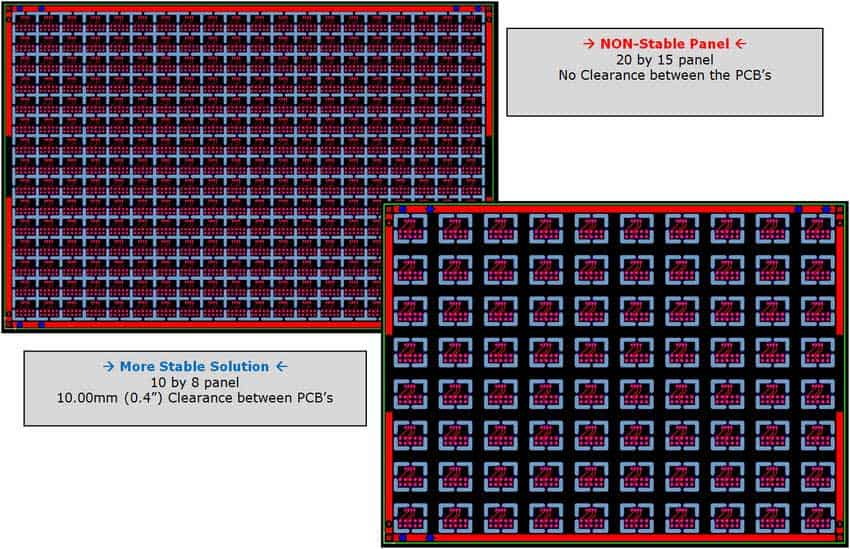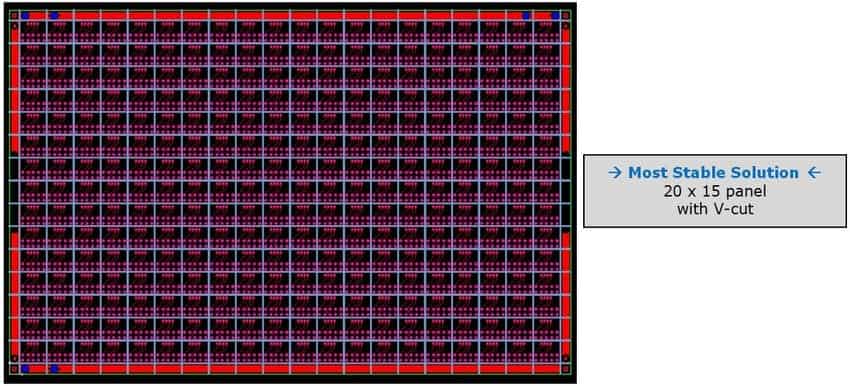How to Panelise Small PCBs
This guide will help you to understand how to panelise small PCB’s and how to ensure the has mechanical stability for the production process.
A stable panel is one that does not sag or bend. This can be avoided in several ways depending upon the separation method used (Break rout or V-cut).
The more small PCB”s you put in a panel, the more material will be cut away from the panel. This makes your panel increasingly weak.
Typically large Break routed panels made up of small PCB”s tend to bend when held horizontally but less so with V-cut scoring.
Break routing
If you require the PCB separation to be via Break routing then following points should be considered.
- Keep the panel small.
- Do not put too many small PCB’s on one panel.
- We recommend a 10mm clearance between Break routing, this means if you use a 2mm routing tool then between PCB’s the distance will be 14mm.
- Use wider panel borders.
- Break routing requires the placement of break-out-tabs on both the X & Y of the PCB. The minimum accessible length to place these is 5mm.
V-cut Scoring
In many cases V-cut scoring is the best solution for the the separation method of small PCB’s in a panel as it ensures good mechanical stability.
Other advantages are that there is no need to leave space between the PCB’s so more can be fitted on to the panel and border can be the recommended 5mm as opposed the Break routing that needs a bigger border for small PCb’s.


